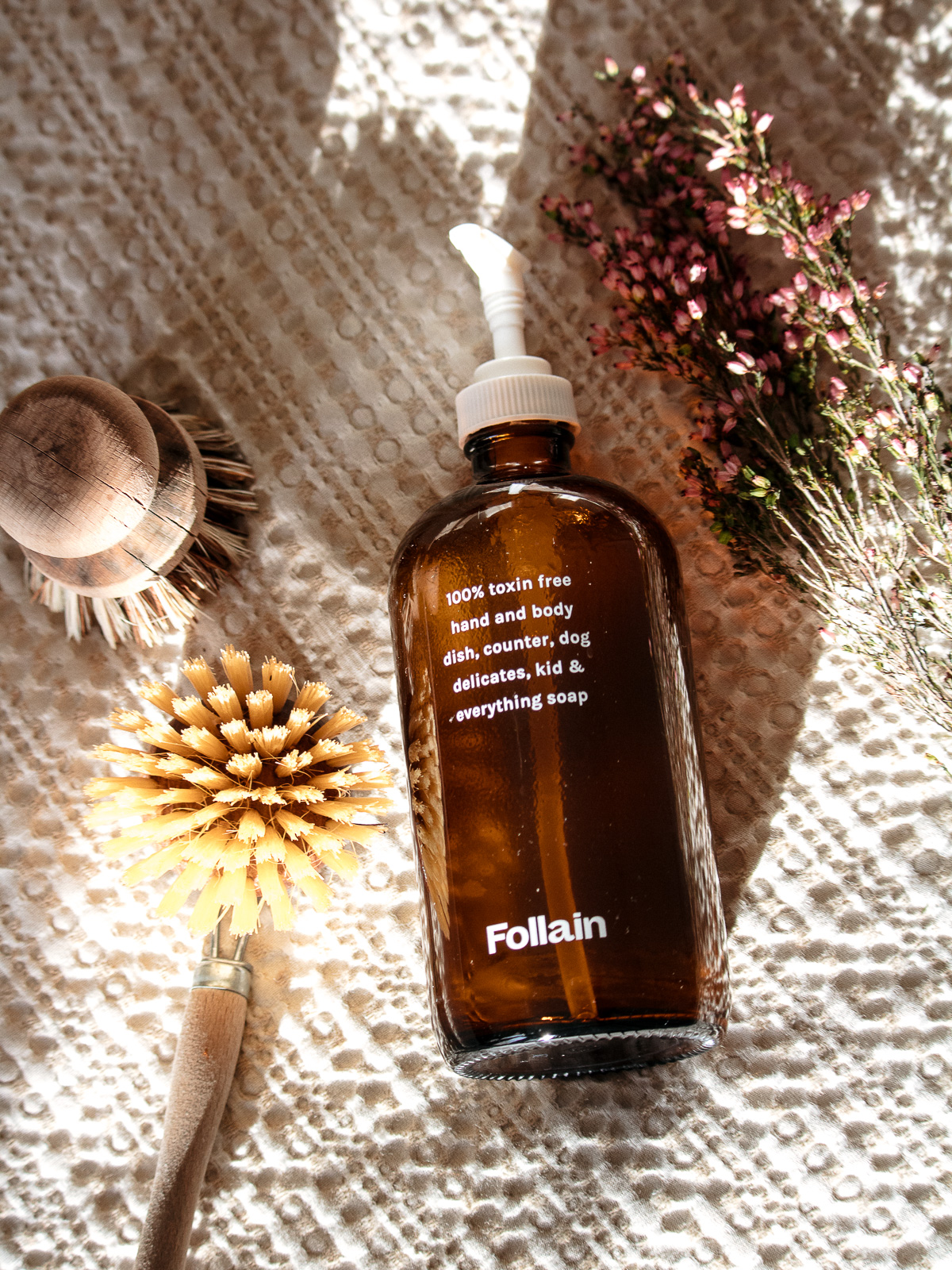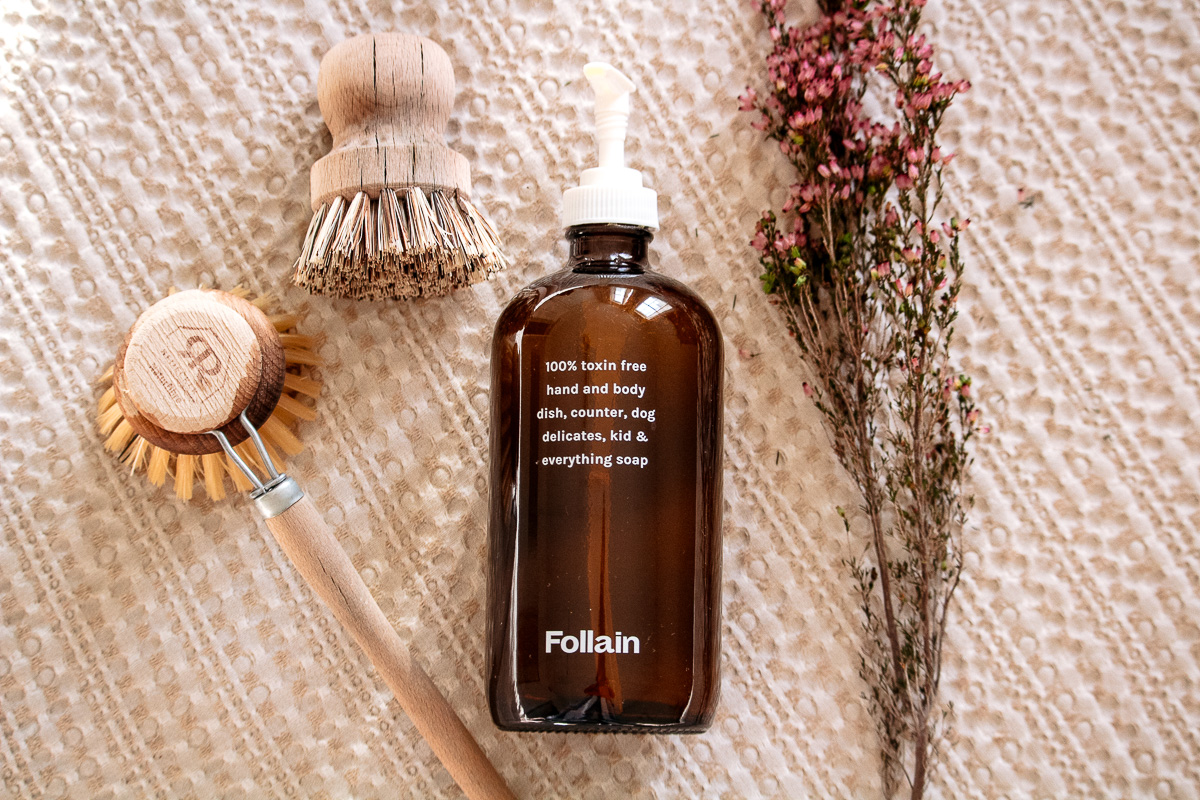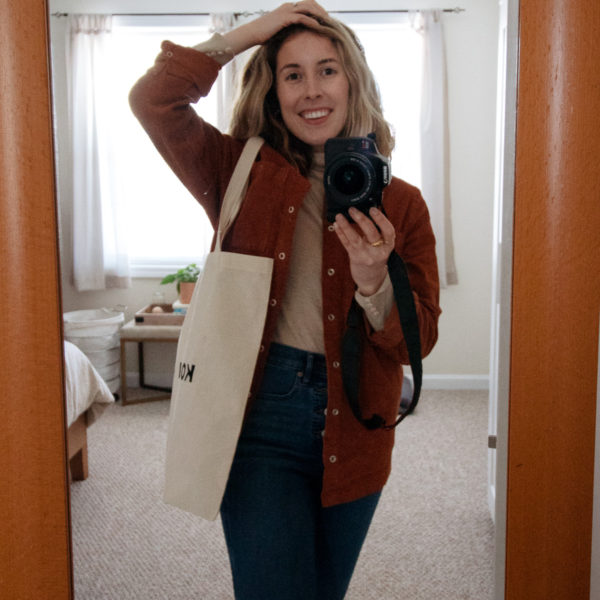
“Now’s the time to lift our community up, even if that means pivoting away from one value to prioritize another; in this case pivoting from sustainability to create and sustain a strong, thriving, and inclusive community.”
– Lauren Singer, CEO + Founder, Package Free Shop + Trash Is For Tossers
We are all doing our best.
Unfortunately, there’s been major changes in this zero waste lifestyle because of the pandemic. And I know a lot of people (myself included) are feeling uneasy about it. States that had plastic bans starting in May are now being postponed to a later date. There are many towns + cities that have stopped picking up recycling because there’s lack of resources. Grocery stores, clothing shops, pharmacies, etc., are not allowing customers to bring in their reusable bags. Basically, as stated from a Vox article, single-use plastics are all over the front lines of the COVID-19 response.“
This all sounds pretty depressing, right? I’ve definitely felt guilty using plastic bags when grocery shopping and I’ve felt guilty ordering a lot of goods online through Amazon. What does this all mean? What are the long term affects? I’ve felt so torn to order takeout because on one hand, I want to support local business but on the other hand, takeout containers contributes to the mess. Anyone else feeling this way? You’re not alone.
I have to keep reminding myself, we are going through a global pandemic and behavior changes need to happen. The decisions local government is making is for the safety of us + essential workers. As Lauren Singer, who is the zero waste guru of our generation, mentioned “do what you need to do to feel safe.” Before the pandemic, Lauren didn’t contribute any trash since 2012. She even started one of the first zero waste shops, Package Free Shop. So when Lauren shared with everyone that for the first time in years she bought plastic to prepare for COVID-19, a sigh of relief came across me. We are all doing our best.

So with all of this in mind, what can we do to still feel like we’re engaging with a zero waste lifestyle during a pandemic?
I’ve got some tips for you:
I also want to take a moment to say the things I’m worrying about comes from a place of complete privilege. I have a roof over my head, groceries I can buy, a cozy apartment I can decorate with……the list can go on. So while yes, I am furloughed right now, I do however live in a dual income household. And neither of us have to work on the front lines as essential workers. We don’t have kids or even pets that all play a big part into these lifestyle choices. Again, we are all doing our best. So with that said, let’s get into it!
1. Limit Your Meat Intake
I know limiting your meat intake is easier said then done. But small changes make a big difference over time. Maybe do a meatless Monday to start and then once you have a good grasp on that, do meatless meals on Monday and Thursday. And so on, and so on….
I stopped eating meat over 5 years ago and I mostly eat plant-based. I’ll have the occasional seafood dish – but now, I don’t eat dairy and eggs. My stomach is the best its felt in years. I don’t crave meat at all, even when my husband cooks bacon in the morning. Do I enjoy the smell? Sure. I think it’s mostly because it reminds me of my childhood, but I still don’t crave it. I mention this because it took over 5 years to get to where I am today. Small habits like slowly removing meat from your eating contributes largely in the end. But let’s get back to why eating less meat contributes to a zero waste lifestyle.
Did you know that animal agriculture is now recognized as a leading cause of global warming (NY Times)? When you think about it, there are many steps that involve eating meat. For example, the growing + processing of food for livestock, the emission associated with the farming process, the impact of land use change to house the animals, the digestion of cows, etc. To fully understand the impact, watch this 5 minute video of why beef is the worst food for the climate.
Here’s another really good article from the New York Times where they put it really eloquently, if you care about the working poor, about racial justice, and about climate change, you have to stop eating animals.
2. Try Composting
There are two main ways to do it, commercial composting + backyard composting. Commercial composting involves using a vendor or a facility to pick up your composting and they will process it themselves. If you’re like me and live in an apartment, you have limited space to do backyard composting. So I suggest doing some research on local companies you can work with. Litter Less has a great site listing off where you can compost in the United States (categorized by each state). And if you’re local to New England, City Compost is reliable resource. I’m currently looking into it for us!
Backyard composting, as you can guess, means you do it yourself. Now’s the perfect time if you have the space while you’re home advancing on your home improvement projects. This article from Trash Is For Tossers breaks down (literally) what you need to know if you’re composting in your backyard. You’ll understand what food you can compost, where to do it, what do with your homemade compost, etc. Try it out!
3. Air Dry Your Clothes
You probably don’t realize it (because I sure didn’t) that your dryer is the second-most energy-consuming appliance. Air-drying clothes can reduce the average household’s carbon footprint by a whopping 2,400 pounds a year. This also means you save money on your electric or gas bills by doing this. As we approach summer and the warmer weather, it’s a really good time to try this out. Not to mention, you’re home more often!
And when you line dry your clothes outside, it reduces strong odors naturally (no toxic dryer sheets) + adds freshness. The sun will whiten + brighten any of your white clothes or sheets (instead of bleaching). Air drying and line drying is super gentle on your clothes meaning your wardrobe will last longer. All wins here! I have my eye on this Iris Hantverk drying rack for our bedroom. Perfectly Scandinavian and simple.
And an added bonus is when you air dry inside during the winter, the moisture from the clothes help add humidity to the dry winter air. There are a ton of positive reasons to try this. And again, baby steps. Maybe try doing this every other week and see how it goes.
4. Lean Into The Homemade Trend
This pandemic is really teaching me to use up my resources and get creative in the kitchen. If you’ve seen my IG Stories, then you know I’m loving making homemade crackers, making my own vegetable broth, getting crafty with using leftover vegetables in soup + more! Not only are you reducing your plastic with the packaging by making things homemade, you are also reducing your food waste.
When I had the convenience of grocery shopping whenever I could, I didn’t eat everything in my fridge first and the food easily went bad. It was such a waste of money + a waste of food. You should also try making your own cleaners for the house. I mentioned recipes in my 5 ways to repurpose goods at home blog post by using leftover orange and lemon peels. Get creative!
5. Buy Secondhand
Focus on buying secondhand (if you’re in need of some retail therapy). The most sustainable way to shop is to buy clothes that already exist. And that goes with furniture too. We just bought our new bookshelf secondhand – there are so many good gems out there. Nowadays, there are some great vintage and secondhand resources that make it super easy when . Here are a few that I love:
- Woven Folk – I bought this sweater + this oversized blue jacket back in February.
- Cabin Vintage – look at this white cotton eyelet dress!
- RAWSON – very cute tank. I love the high neckline.
- Lovanie – they just launched their beta website where you can shop pre-loved ethical fashion (because we know those prices are not cheap!)
If these 5 tips aren’t enough, you can also check out my zero waste swaps I’ve made in my home blog post.
Enjoy!
xx




Leave a Reply